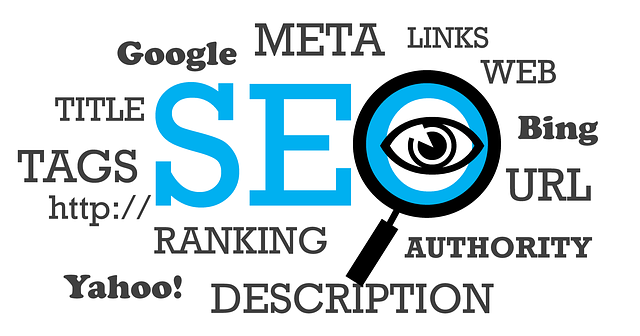A SEO Audit is a vital process for evaluating a website's online performance and visibility across technical, on-page, and off-page factors. It starts with keyword strategy analysis using tools like Google Keyword Planner to understand user search patterns and optimize content accordingly. This audit includes assessing site speed, mobile compatibility, schema markup, backlink quality, and on-page elements. By combining keyword research with performance metric analysis, businesses can tailor their strategies for better rankings, increased traffic, and improved user engagement. A successful SEO Audit involves continuous monitoring and refinement to stay current with algorithm changes and market trends.
A keyword optimization audit is an essential component of any successful digital marketing strategy. This comprehensive guide delves into the intricacies of conducting a SEO (Search Engine Optimization) audit, exploring key areas such as understanding search engine algorithms, identifying relevant keywords, analyzing performance metrics, and optimizing on-page and off-page factors. By following these strategic steps, businesses can enhance their online visibility, outpace competitors, and adapt to evolving market trends, ultimately driving more organic traffic and conversions.
Understanding SEO Audit: A Comprehensive Overview

A SEO audit is a meticulous process that evaluates every aspect of a website’s online visibility and performance. It goes beyond a quick keyword check; it involves deep-diving into technical, on-page, and off-page factors to identify areas for improvement and potential issues hindering search engine rankings. This comprehensive review helps businesses understand their current standing in the digital landscape.
The audit process typically begins with an analysis of keywords and content strategy, ensuring relevant terms are effectively incorporated throughout the site. It then delves into technical SEO, checking for crawlability, site speed, mobile-friendliness, and schema markup implementation. Additionally, it examines backlink profiles to assess link quality and potential toxicity, while also evaluating on-page elements like headings, meta descriptions, and image optimization.
The Role of Keyword Optimization in SEO Strategy

In the ever-evolving digital landscape, a robust Search Engine Optimization (SEO) strategy is pivotal for online visibility and business growth. At the heart of this strategy lies keyword optimization, which acts as a bridge between potential customers and your brand. A comprehensive SEO audit involves meticulous analysis of keywords to understand user search behavior and identify areas for improvement. By integrating relevant keywords into content, meta tags, and URL structures, businesses can enhance their online presence, attract targeted traffic, and ultimately drive conversions.
Effective keyword optimization ensures that your website ranks higher on search engine results pages (SERPs), making it easier for potential customers to discover your products or services. It involves a strategic approach to understanding the intent behind user queries and aligning your content with these intentions. Through ongoing SEO audits, businesses can stay ahead of algorithm updates, monitor keyword performance, and adapt their strategies to meet evolving market demands.
Identifying Relevant Keywords for Your Business

When conducting an SEO audit, a critical step is identifying relevant keywords that accurately reflect your business’s offerings and target audience. This involves understanding your niche market and what terms potential customers might use when searching for products or services like yours. Tools such as Google Keyword Planner, SEMrush, and Ahrefs can aid in uncovering valuable keyword insights, including search volume, competition, and related keywords.
By analyzing both short-tail (general) and long-tail (specific) keywords, you can create a comprehensive list that aligns with your business goals. Long-tail keywords, though often having lower search volumes, are typically less competitive and can drive highly targeted traffic. Incorporating these keywords strategically into your content, meta tags, and overall SEO strategy will enhance your website’s visibility and attract the right audience, ultimately improving your search engine rankings.
Analyzing Keyword Research and Performance Metrics

A comprehensive SEO audit begins with a thorough analysis of keyword research and performance metrics. This involves scrutinizing the relevance and effectiveness of targeted keywords, their search volume, and competition levels. By understanding user intent behind specific search queries, businesses can optimize content to better align with what their audience is seeking.
Performance metrics play a pivotal role in this process. Tracking key indicators like click-through rates (CTRs), conversion rates, and bounce rates provides valuable insights into the success of keyword strategies. These data points help identify high-performing keywords that drive traffic and conversions, as well as underperforming areas that may require reoptimization or content refreshes to enhance search engine visibility and user engagement.
Assessing On-Page Keyword Implementation

In a comprehensive SEO audit, assessing on-page keyword implementation is a critical step. This involves examining how well your website’s content aligns with targeted keywords and phrases. It’s not just about using the right words; it’s about strategically placing them within the context of your titles, headings, meta descriptions, and body text. A thorough review ensures that each page has a clear focus keyword and that these keywords are seamlessly woven into the content without appearing forced or overused (keyword stuffing).
Effective on-page optimization also takes into account user experience. Search engines favor websites that offer valuable, relevant content tailored to their users’ queries. This means ensuring your content is not only optimized for search engines but also provides a seamless and enjoyable experience for visitors. Proper internal linking, image optimization with alt tags, and ensuring mobile-friendliness are all part of this process, contributing to both SEO and user satisfaction.
Optimizing Off-Page Factors for Better Visibility

An integral part of any comprehensive SEO audit is evaluating off-page factors, which play a significant role in determining your website’s visibility and search rankings. This involves analyzing various elements beyond your site’s content and structure, focusing on building a robust online presence. One key aspect is backlink profiles; high-quality backlinks from reputable sources can significantly boost your website’s authority and trustworthiness in the eyes of search engines. A thorough audit should identify weak links, low-quality or spammy references, and provide strategies to acquire or remove them for optimal results.
Additionally, social media presence and influence are powerful off-page considerations. Leveraging social signals can enhance your content’s discoverability and engagement, indicating to search engines the value and relevance of your material. Incorporating relevant keywords in your social media strategy and encouraging user interactions can contribute to a successful SEO audit by improving overall online visibility and driving traffic to your website.
Evaluating Competition and Market Trends

When conducting an SEO audit, evaluating competition and market trends is a pivotal step. It involves a thorough analysis of your industry leaders and emerging market dynamics. By studying your competitors’ strategies, keyword usage, and content performance, you gain valuable insights into what works best in your niche. This process helps identify gaps where your website can differentiate itself and improve its search engine rankings.
Understanding market trends is equally crucial. Keeping an eye on shifts in consumer behavior, industry innovations, and changing online preferences allows for data-driven decisions. Incorporating relevant keywords and topics that are gaining traction can significantly enhance your SEO efforts, ensuring your content remains timely and appealing to both search engines and target audiences.
Implementing a Strategic Keyword Optimization Plan

Implementing a strategic keyword optimization plan is a vital step in enhancing your website’s visibility and performance during an SEO audit. It involves careful research and analysis to identify relevant keywords that accurately represent your brand, products, or services. By aligning your content with these targeted keywords, you increase the likelihood of ranking higher on search engine results pages (SERPs).
This process begins with understanding your target audience’s search behavior and preferences. Tools like Google Keyword Planner can offer valuable insights into keyword trends and volumes, helping you select terms that balance popularity and competition. Once identified, these keywords should be strategically incorporated into your website’s metadata, headings, content bodies, and image alt tags. A well-executed keyword optimization strategy not only boosts organic traffic but also ensures your website resonates with the right audience.
Monitoring and Refining SEO Strategies Over Time

A comprehensive SEO audit isn’t a one-time event but an ongoing process that involves continuous monitoring and refining of your SEO strategies. After the initial audit, it’s crucial to track your website’s performance against set KPIs, analyzing metrics like organic traffic, keyword rankings, click-through rates, and bounce rates over time. This data will reveal trends, pinpoint areas of success, and highlight areas for improvement.
Regularly reviewing your content, on-page optimization, technical SEO, and backlink profile is essential to stay aligned with search engine algorithm updates. By staying agile and making data-driven adjustments, you can enhance your website’s visibility, attract more organic traffic, and ultimately boost conversions.
